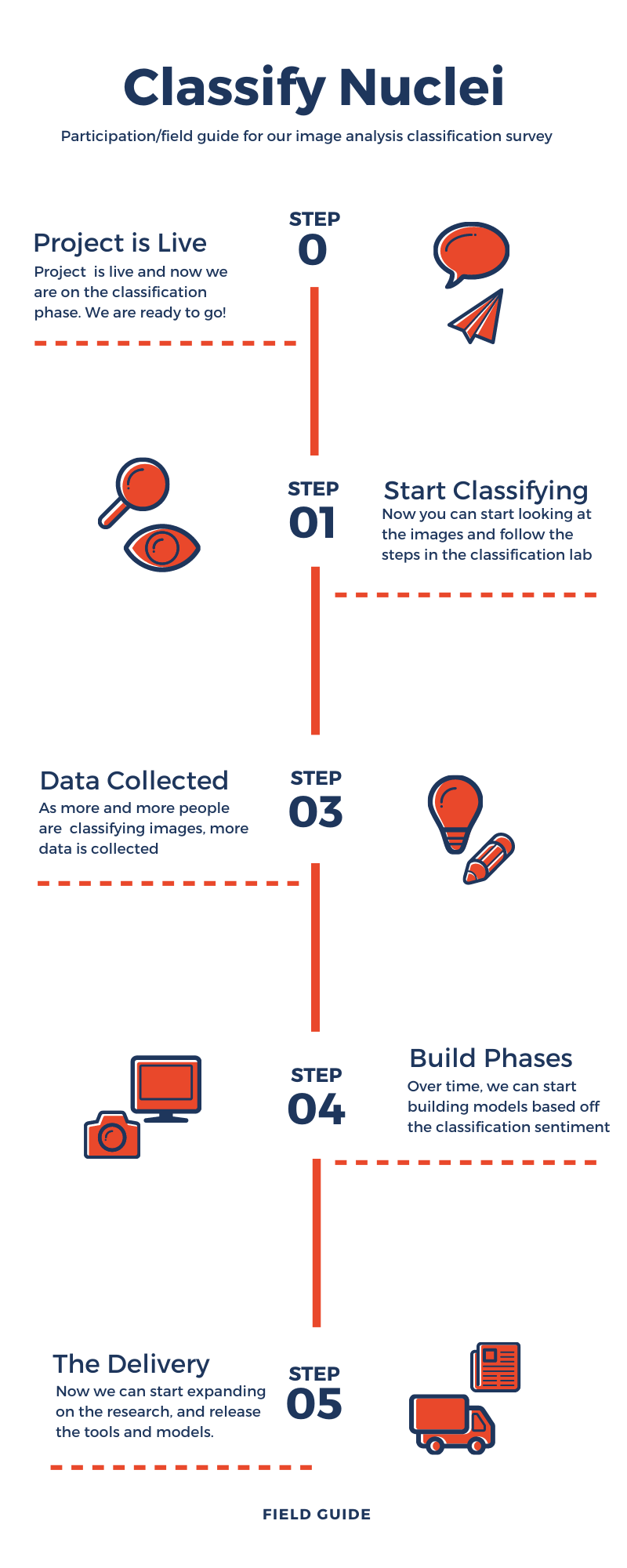As seen on the project home page
Currently, we want to focus on the tagging of Nuclei images as well as its slicing, in order to allow us to figure out certain patterns computationally. These patterns will then be inputted into a GAN in order to create similar images and replications. We hope the results will help us look into developing tools in the field of biomolecular geometry.
A generative adversarial network can take the input data from the surveys, and computationally generate similar images using generative predictive modeling. Being able to do this with nuclei images will help researchers figure out ways certain patterns are structured, how to speed up the image slicing process, and may even contribute to live saving technologies. Things such as reconstructively looking at breast cell histopathology nuclei and automating the tagging process with computer vision is feasible. This will allow researchers to better automate the diagnosis process or know problematic regions. This is just an example, and other research models may also be available. The ability to take in even the simplest non-professionally labeled or human sentiment aspects of image surveys and add it to professionally configured GAN pipelines may likely lead to a highly complex GAN. Many AI researchers in the field might also look into this data, and other research may be contributed as well.
Currently, we are trying to build out the GAN and potential data models or software based on the survey sentiment and results. Professionally labeled data (outside this survey) vs. the data curated here may also be inputted into the final models. We aim to publish lots of the survey results openly, and work on tools derived from such data or results. Most of the data will likely be published in a preprint and/or open repositories.
Dataset #1
Dataset #2
Dataset #3
All data was sourced through public datasets on Kaggle
Depending on how the classification models and survey results turn out, will allow us to further know the usage of the data given its quality score. We aim to utilize the data for data models, as well as building up a series of hypotheses on creating a Generative Adversarial Network that regenerates the most optimal results. We also want to begin development of the GAN, and see ways we may phase this out to something more advanced.
The results tab will include any results that have been published openly (Visible once results/papers start getting released and as information comes through).
GAN as in Generative Adversarial Network
Survey as in the classify workflow
Professionally Labeled Data as in repositories by academia or researchers
Quality Score as in the numerical quality of the data in regards to usability and insight
Regarding Publishing Any research that our research team publishes that directly references this data, should be expected to be released in the "Research Tab" (When Available). This includes preprints, journal entries or data repositories on places like Figshare, Sourceforge, and GitHub. This includes research whether it is in the form of a software tool or a literary review describing the results.
